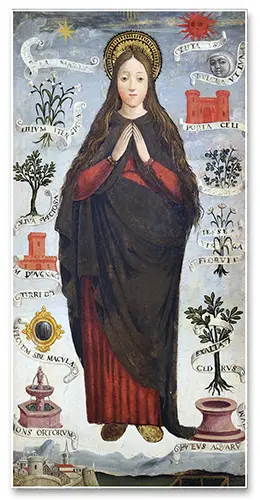…the origin of the statue of Christ the Redeemer?
The thirty-metre-high statue built on the peak of Corcovado – one of the most enchanting spots in Rio de Janeiro – soon became the main symbol of the Brazilian nation and earned a place among the seven wonders of the modern world. More beautiful than the sculpture itself and the panorama in which it stands, however, is the origin of this Christian monument.
In 1888, a few months after Princess Isabel granted freedom to the slaves, the abolitionists decided to honour her. They asked Her Royal Highness to authorize them to build a statue on Corcovado in honour of “Isabel, redeemer of the slaves.”
The response could not have been more pious: refusing the homage offered her, the princess turned the idea into an imperial order, commanding an image of the Sacred Heart of Jesus, the true Redeemer of mankind, to be erected there.
However, many battles ensued before this noble wish was realized because, with the fall of the monarchy the following year, the project was cancelled… and an opportunity to take it up again only came about in 1921.
The inauguration finally took place on October 12, 1931, the feast of the Patroness of Brazil. On that day Corcovado became, in the words of Pope Pius XI (cf. Letter, 14/9/1931), a true throne of Jesus Christ, who with open arms seems to invite all His children to a tender embrace! ◊
…why Our Lady is invoked as the “Tower of David”?
The Litany of Loreto compiles some of the countless titles of the Blessed Virgin that have biblical origins or special theological significance.
The invocation Tower of David, for example, goes back to a passage of Scripture concerning the fortifications with which the prophet-king protected Jerusalem: “like the tower of David, built for an arsenal, whereon hang a thousand bucklers, all of them shields of warriors” (Sg 4:4).

Mary is compared to a tower for various reasons. First of all, in order for such a building to be impregnable, it must have solid foundations. Now, God wanted to establish the incomparable spiritual edifice of the Blessed Virgin’s virtues upon indestructible foundations, namely, her faith and humility.
Furthermore, a tower attracts attention because it surpasses other buildings in height and dominates the surrounding area. Our Lady rose above creatures through the contemplation and knowledge of divine perfections, her sublimity surpassing the Seraphim themselves.
Thirdly, the Most Pure Virgin resembles a tower because of her insurmountable strength. She is the Mother of Sorrows, who valiantly endured the sufferings of the Passion, the strong Woman who sustains the Church Militant, helping her children who invoke her with confidence and giving them fortitude and courage in all tribulations.
Finally, in Mary we find a safe defence against the onslaughts of evil, since she possesses the shields of warriors: the faith of the prophets and Apostles, the constancy of the martyrs, the candour of the virgins, the astuteness of the Doctors and the virtue of the confessors. She is the fortress in which faithful souls can take refuge without fear! ◊


